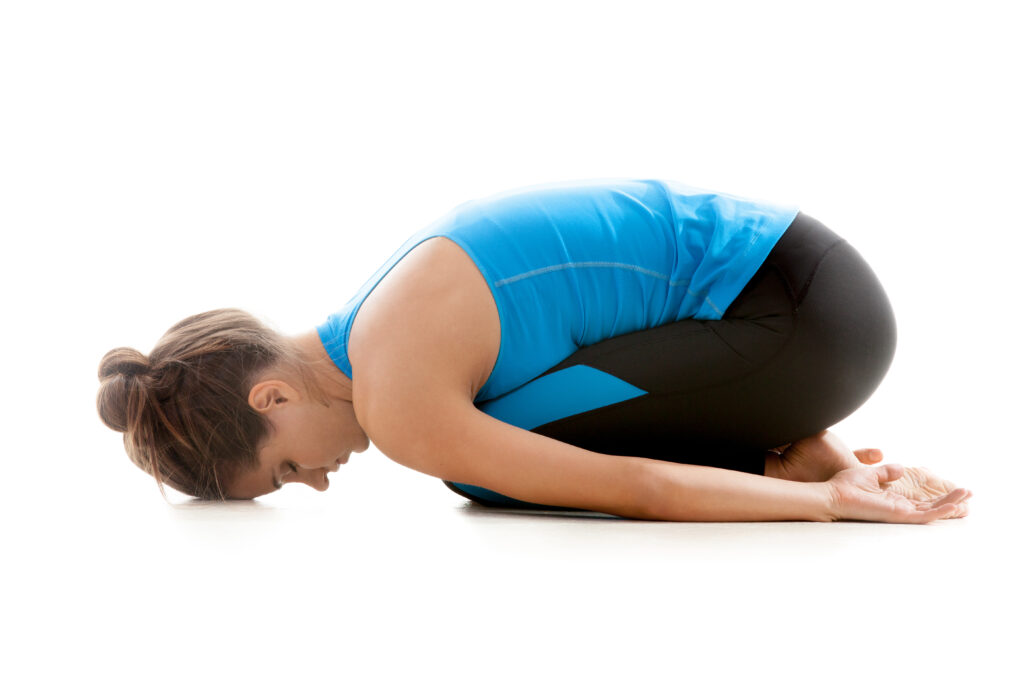- drambalkar@yahoo.co.in
- Mon - Sunday 10:00 AM - 02:00 PM
How Yoga Can Help in Psoriasis Treatment?
Psoriasis is a skin condition that causes discomfort and affects your quality of life. While medications are important, many people are finding yoga to be helpful in managing psoriasis symptoms. Yoga for Psoriasis can help by focusing on both the body and mind. In this blog, we’ll look at how different yoga practices, including Pranayam for Psoriasis, can reduce inflammation, improve blood flow, and help you relax. Stress is a common trigger for psoriasis flare-ups, and yoga can help calm your mind, making it easier to manage the condition. Throughout this blog, you’ll learn simple yoga exercises and breathing techniques that can help with psoriasis symptoms and improve your overall well-being.

The Mind-Body Connection: Yoga’s Role in Managing Psoriasis Symptoms
The mind-body connection plays a crucial role in managing psoriasis symptoms. Stress and emotional imbalance are known to trigger or worsen flare-ups of psoriasis, a skin condition that is partly influenced by mental well-being. Yoga for Psoriasis can be an effective tool in managing these flare-ups by promoting relaxation and reducing stress. By incorporating breathing exercises like Pranayam for Psoriasis, yoga helps calm the mind, improve emotional stability, and enhance mental clarity. These practices not only reduce stress but also support the body’s ability to heal, addressing the psychosomatic aspects of the disease. With regular yoga practice, individuals can find relief from the emotional triggers that often worsen psoriasis, leading to fewer flare-ups and better overall management of the condition. Thus, yoga becomes an important part of a holistic approach to managing psoriasis symptoms.
Yoga for Psoriasis: A Holistic Approach to Healing
How Yoga Works for Psoriasis
Yoga for Psoriasis is a natural way to help manage the condition. Psoriasis causes red, flaky patches of skin, and stress can make it worse. Yoga helps reduce stress by calming the mind and body. It also improves blood flow, boosts the immune system, and helps the body get rid of toxins, all of which can reduce psoriasis symptoms.
Best Yoga Poses for Psoriasis Relief
Some yoga poses are especially good for soothing psoriasis. These include:
- Downward Dog (Adho Mukha Svanasana): This pose increases blood flow and reduces inflammation in the body.
- Child’s Pose (Balasana): A gentle pose that helps you relax and relieve stress.
- Seated Forward Bend (Paschimottanasana): Helps release tension and improves blood circulation.
- Bridge Pose (Setu Bandhasana): Opens up the chest and increases blood flow, which can help with healing.
How Regularly Practicing Yoga Can Help:
Doing yoga regularly can make a big difference in managing psoriasis. By practicing yoga every day, you can lower stress, improve blood flow, and keep your body and mind in balance. Over time, yoga can help you reduce psoriasis flare-ups and support healthier skin. Yoga for Psoriasis offers a gentle, safe way to help your healing process.
Pranayama for Psoriasis: Harnessing the Power of Breath
Introduction to Pranayama
Pranayama is a breathing technique that comes from yoga. The word “Pranayama” means controlling your breath. By practicing Pranayama for Psoriasis, you can learn to control your breath to help improve your health, reduce stress, and promote healing. This can be especially helpful for people with psoriasis.
Benefits of Pranayama for Psoriasis
Psoriasis is a skin condition that can get worse with stress and inflammation. Pranayama for Psoriasis can help in these ways:
- Reduces Stress: It calms your mind, which helps to prevent psoriasis flare-ups caused by stress.
- Improves Blood Flow: Better circulation helps bring oxygen to your skin, supporting healing.
- Boosts Immune System: Pranayama strengthens the immune system, which can help manage psoriasis.
- Promotes Skin Health: A healthier body from Pranayama may lead to better skin.
Effective Pranayama Techniques for Psoriasis
- Nadi Shodhana (Alternate Nostril Breathing): This breathing technique balances your body and reduces inflammation, which is helpful for psoriasis.
- Kapalbhati (Breath of Fire): It helps clear toxins from your body and refreshes your skin.
- Bhramari (Bee Breath): This technique calms your mind and body, reducing stress that can trigger psoriasis.
How to Incorporate Pranayama into Your Routine
To get the benefits of Pranayama for Psoriasis, practice for 10-15 minutes each day. Start with simple techniques like Nadi Shodhana, and slowly increase your practice time. Focus on deep, slow breaths, and try combining it with some relaxation or meditation. Regular practice can help you manage psoriasis and improve your health.
Transform Your Psoriasis Treatment Plan! Ready to enhance your psoriasis treatment with yoga? Explore our blog for expert tips on how to use yoga as a natural remedy for your skin health.
Conclusion
In conclusion, yoga and pranayama offer holistic benefits for managing psoriasis by reducing stress, improving circulation, and promoting overall skin health. These practices can help balance the body and mind, easing the symptoms of psoriasis and supporting overall well-being. However, it’s important to consult with our Ayurvedic doctor for skin problems in Mumbai before starting a new yoga routine, especially if you have existing health conditions. With regular practice, yoga can play a significant role in both physical and mental health improvement for those with psoriasis.
Visit our Ayurvedic Clinic for Skin in Vasai, where we provide effective treatments to help manage psoriasis and enhance your skin health. Take the first step toward healthier skin with the right care!
FAQs
Q1. How does pranayama help with psoriasis?
Pranayama, or controlled breathing exercises, helps reduce stress, which is a common trigger for psoriasis flare-ups. Pranayama also improves oxygen flow to the body, aids detoxification, and promotes overall mental well-being. Techniques like Nadi Shodhana (Alternate Nostril Breathing) and Ujjayi Pranayama (Victorious Breath) are particularly helpful.
Q2. Can I combine yoga with other natural treatments for psoriasis?
Yes, yoga can be combined with other natural treatments for psoriasis, such as a balanced diet, hydration, and topical treatments. However, it’s always advisable to consult with a healthcare professional to ensure that these treatments complement each other and do not interfere with prescribed medications.
Q3. Is yoga suitable for all types of psoriasis?
Yoga can be beneficial for all types of psoriasis, including plaque psoriasis, guttate psoriasis, and psoriatic arthritis. However, it’s important to modify the practice based on the severity of your symptoms and consult a healthcare provider before starting any new exercise routine.
Q4. Are there any precautions I should take while practicing yoga for psoriasis?
While yoga is generally safe for people with psoriasis, it’s important to listen to your body and avoid any poses that cause discomfort or strain. If you have joint pain or severe flare-ups, consult a healthcare provider or yoga instructor who specializes in therapeutic practices for tailored recommendations.
Q5. What is the best time of day to practice yoga for psoriasis?
The best time to practice yoga depends on your personal schedule and when you feel most relaxed. Many people find that practicing yoga in the morning helps set a calm tone for the day, while others may prefer evening sessions to unwind before bed. Consistency is more important than timing, so find what works best for you.

Get in Touch with us Today to Begin Your Journey of Transformation

Contact Us
- Dr.Ambalkars Aayurvedic Research Centre, ARC Bhavan, Vijay Vihar Complex, Evershine City, Last Stop, Vasai (E)
- drambalkar@yahoo.co.in
- +91 9320193201
- +91 9766362776

